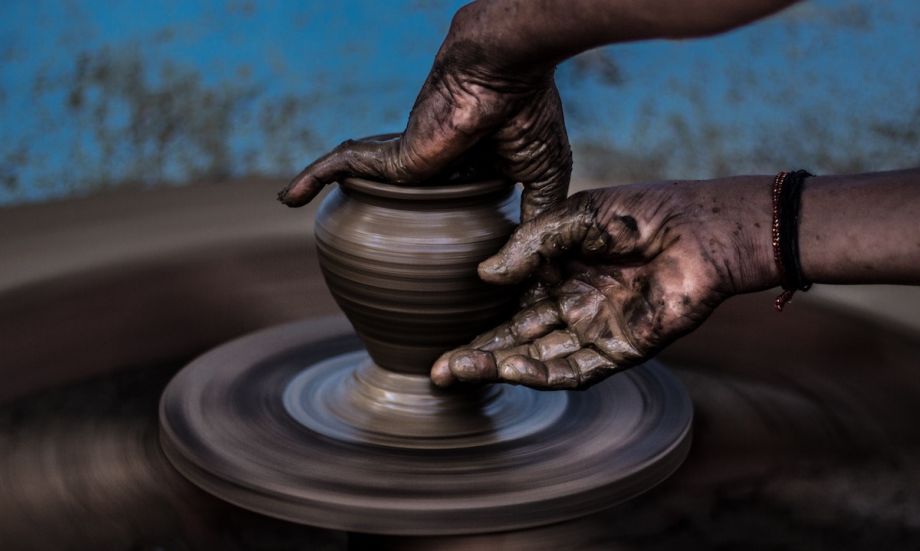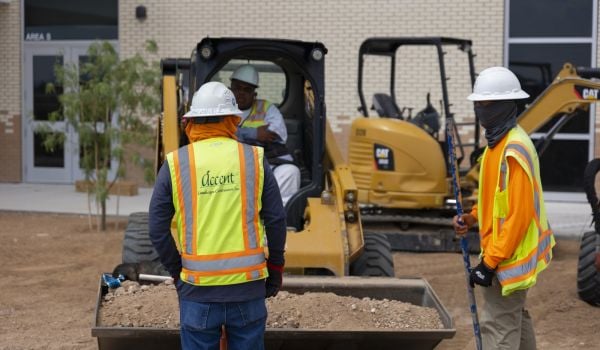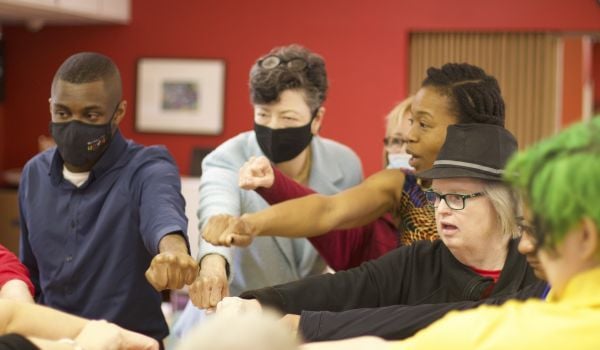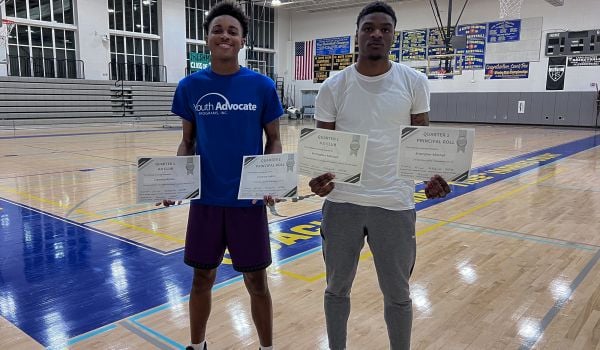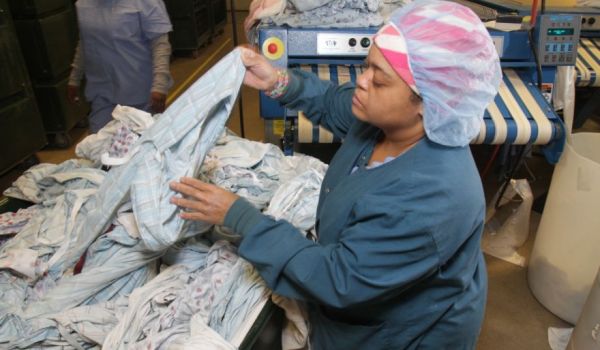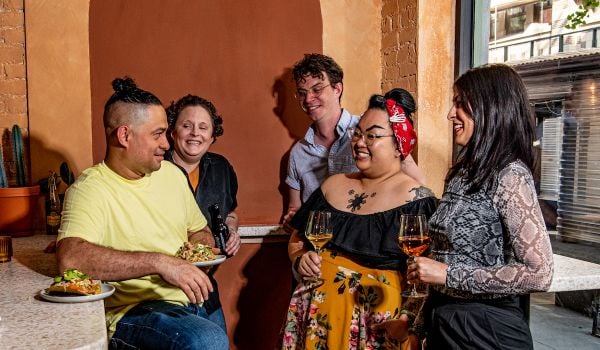EDITOR’S NOTE: This sponsored content is paid for by the Center for Cultural Innovation (CCI), as part of its AmbitioUS initiative. This series explores how alternative economic models can empower artists and culture bearers, with an eye toward financial freedom and long-term sustainability.
In 2019, Caroline Woolard got a call from Angie Kim, president of the Center for Cultural Innovation (CCI), that would change the course of her life. At the time, she was working on an MFA in public action at Bennington College while also teaching at the University of Hartford as an assistant professor of sculpture.
“Angie asked me if I would quit my job if I found a way to deliver affordable and equitable higher education in the United States,” Woolard says. “I said, of course!”
Woolard was nominated for a fellowship via CCI’s AmbitioUS initiative to research the topic. Over the next year, Woolard and her team worked on a report called Spirits and Logistics which explored alternatives to taking out hefty student loans to receive an education in the arts. Specifically, the report looked at ways for grantmakers, universities and arts institutions to collaborate with the BIPOC-led cooperative movement.
“The simplest way to say it is this: Why would a young person take out a loan for $200,000 to go to an art school founded by dead white people when they could apprentice with a cultural cooperative and get real-world training today?” Woolard says.
The report defines cooperatives as “democratic enterprises that are designed to meet people’s economic and social needs.” So when considering the option of a co-op as an alternative to a traditional art school, a co-op can provide practical, hands-on experience paired with entrepreneurial and professional development that can train artists for success as working creatives. As far as practicality goes, co-ops are also often lower in cost and more accessible than traditional arts education.
The cost of art school can be prohibitively expensive. Six of the top 10 colleges where parents borrow the most are art schools. Although art degrees do open many career opportunities, many of the skills acquired in art schools can be acquired elsewhere. The report also found that the creative economy is largely occupied by individuals who do not have a college degree: 84% of working artists who make their living primarily from their arts do not have a college degree. As a result, co-ops offer valuable opportunities for artists to learn the skills necessary to make a living from the arts.
“We have to remember that the United States is one of the only so-called developed nations that asks students to pay to learn,” Woolard says. “Looking at the logistics of arts higher education lays plain how unsustainable traditional models for arts education — like college and university settings — are, especially for our most marginalized community members.”
In particular, Black students are more disadvantaged when it comes to higher education. College-educated Black households carry a disproportionate amount of student loan debt. For many students from low-income families, working hard and going to college has not led to the financial success that students have been promised — making paying off those loans difficult, if even possible at all.
In the absence of meaningful, lasting government action on student debt, groups such as the Debt Collective and the Black Lives Matter Global Network Foundation are stepping up to provide relief. But in addition to advocating for student debt relief and more affordable public education, cooperatives could provide a way to achieve more meaningful training without going to college or getting saddled with the corresponding tens of thousands of dollars in debt.
Woolard and the other collaborators point to countless benefits of co-ops beyond avoiding debt. Evidence shows that worker-owners earn higher wages and that worker-owned businesses are primarily in the arts and culture sector. Being a part of a co-op also offers financial growth opportunities that marginalized people are often excluded from, and a different type of training either through mentorship, apprenticeship or other kinds of paraprofessional education. Woolard also notes the crucial role of grantmakers in empowering and supporting these cooperatives.
Ebony Gustave from Cooperative Journal Media participated in the development of the Spirit and Logistics report with Woolard. A multimedia collective that offers political education and storytelling, Cooperative Journal Media hosts co-creative workshops for artists to work together in supporting each other. They also host a podcast, help with graphic and animation design, and provide collaborative consulting with other groups who do similar work.
“Working with Caroline on the report expanded my knowledge of [artist co-ops] even more and is something I reference often when working with artists,” Gustave says. “Sharing a range of models (film, dance, galleries, etc.) that can be run cooperatively will hopefully inspire other artists that they can also cultivate collective agency.”
After finishing the report, Woolard took a job as the chief cultivation officer at Open Collective, which helps co-op creators raise the funds to do this work on their own. By the report’s numbers alone, the growth of the co-op movement continues to appear a more promising path than traditional employment for artists and art school graduates.
According to Woolard’s research, more than 94% of new creative industry jobs created in the United States in the past 10 years occurred outside the formal employment category. These jobs were primarily for independent contractors, freelancers, and other contingent workers.
This is partly why Woolard remains determined to bring the report’s proposed solution to life through projects like Open Collective’s Solidarity School, unrestricted regular giving to Artist-Organizers, and their pathway to community ownership of the tech platform they co-create.
“When we achieve educational justice in the arts, every person will be able to engage in creative learning that is holistic, authentic, rigorous and fun,” the Spirits and Logistics report states. “… But, it begins with one critical understanding: that the heart of this work lies in following the lead of BIPOC creatives and changemakers. Without continuous, sustainable, equitable and accessible support for these keystones of our community, low-cost learning cannot happen.”

Nia Springer-Norris is a Chicago-based solutions and culture journalist who contributes to Next City and Kirkus Reviews. Her work has also been featured in Ms., Romper and Parents.com.

